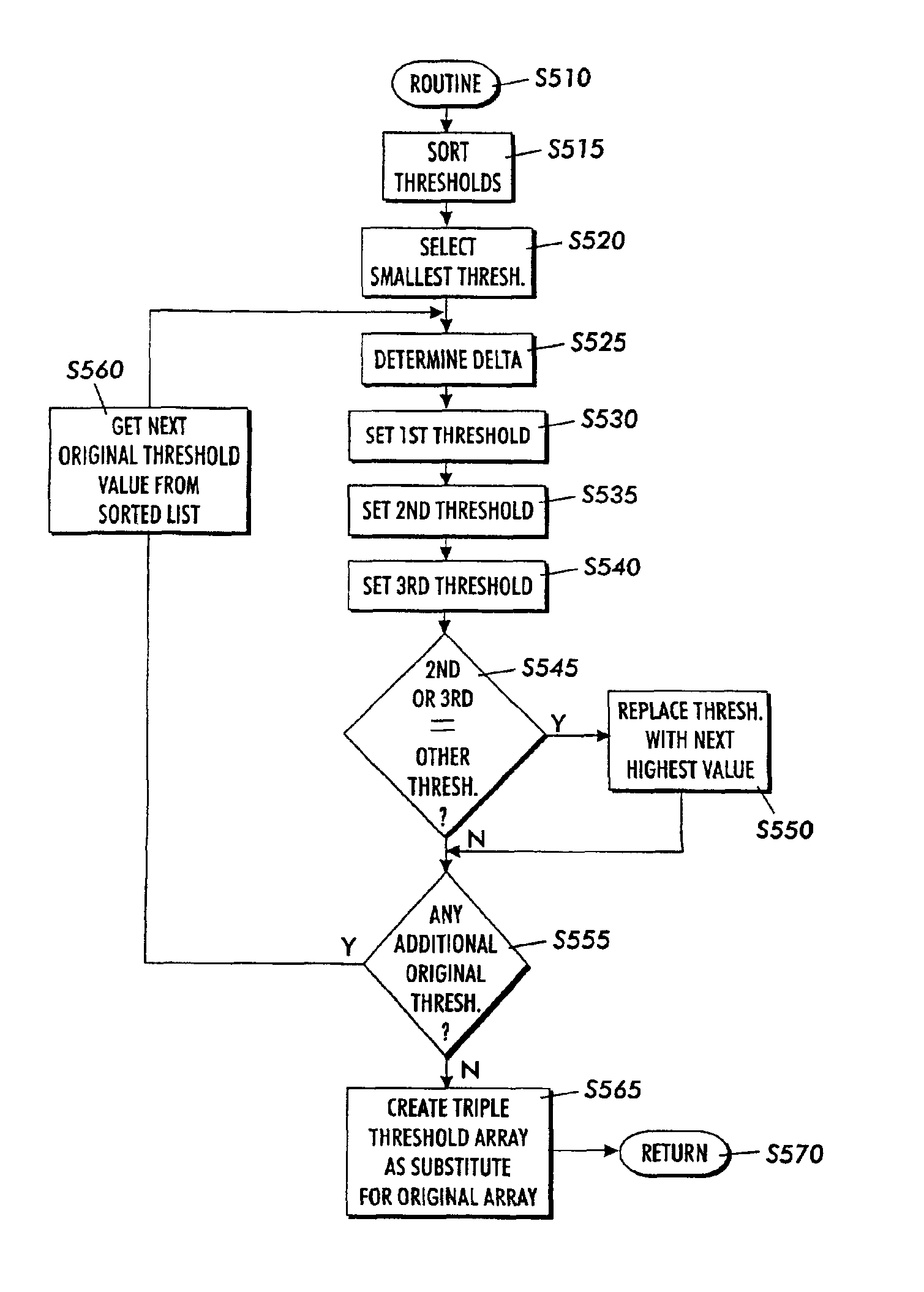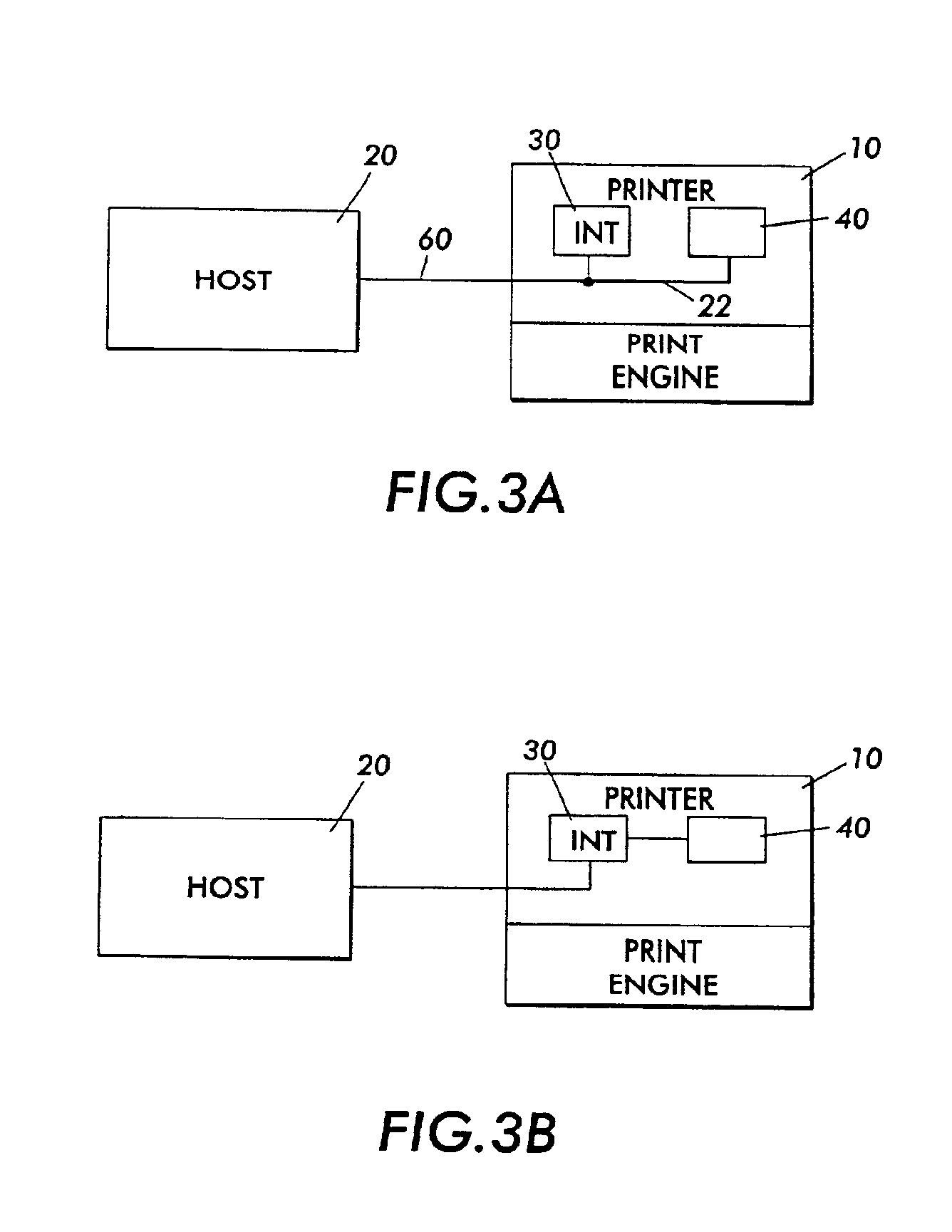Multibit screening of print documents in a PDL environment
a multi-bit, print document technology, applied in the direction of digital output to print units, visual presentations, instruments, etc., can solve the problems of horrid pixel image data, inability of pdl interpreters to properly process and obtain multi-bit, and other non-continuous printing devices, etc., to achieve the effect of reducing posterization defects
- Summary
- Abstract
- Description
- Claims
- Application Information
AI Technical Summary
Benefits of technology
Problems solved by technology
Method used
Image
Examples
Embodiment Construction
FIG. 2 shows a data flow diagram of a PDL document decomposing and rendering process according to this invention. As shown in FIG. 2, a PostScript® document is rendered for reproduction on a high addressable print engine 10. A composite document is provided from a source host 20, such as a general purpose computer, to an input section 32 of a PDL interpreter 30, such as a PostScript® interpreter. The inputted document may include both fully toned graphical objects (such as solid color or black text) and partially toned objects (such as textual line art or images having less than 100% coverage). These documents can be created by the source host 20, or scanned in by a scanner and stored within the host 20.
The fully toned objects of the inputted document are rendered within the PDL interpreter 30 and output directly from the PDL interpreter as 2 bit pixel data at an output section 34. The partially toned (halftone) objects are sent to a high addressable screening module within PDL inte...
PUM
 Login to View More
Login to View More Abstract
Description
Claims
Application Information
 Login to View More
Login to View More - R&D
- Intellectual Property
- Life Sciences
- Materials
- Tech Scout
- Unparalleled Data Quality
- Higher Quality Content
- 60% Fewer Hallucinations
Browse by: Latest US Patents, China's latest patents, Technical Efficacy Thesaurus, Application Domain, Technology Topic, Popular Technical Reports.
© 2025 PatSnap. All rights reserved.Legal|Privacy policy|Modern Slavery Act Transparency Statement|Sitemap|About US| Contact US: help@patsnap.com



